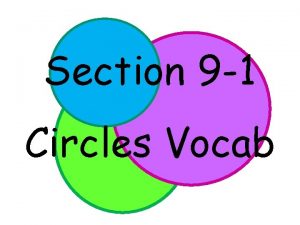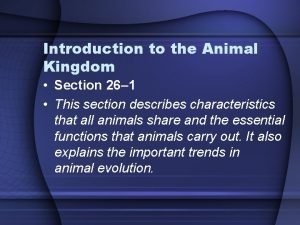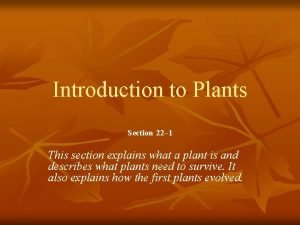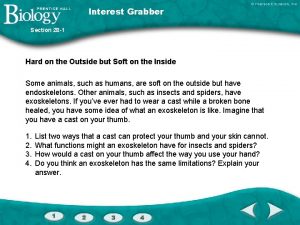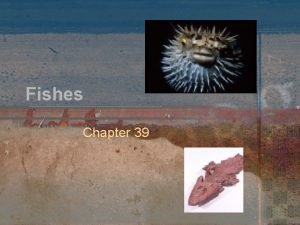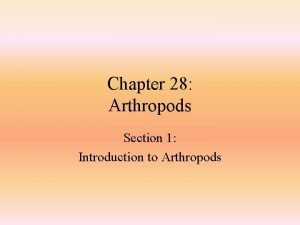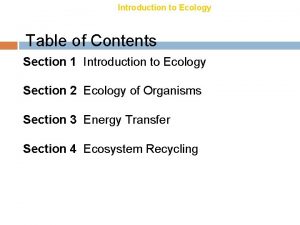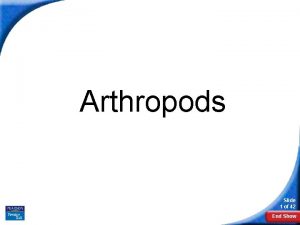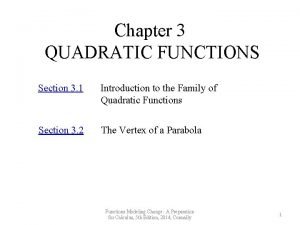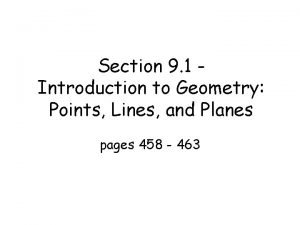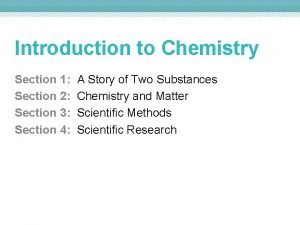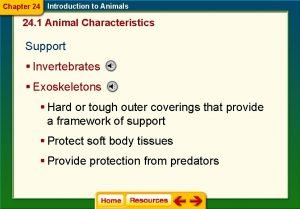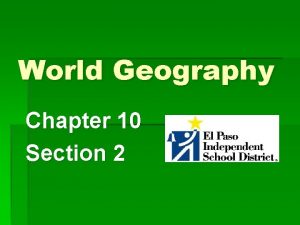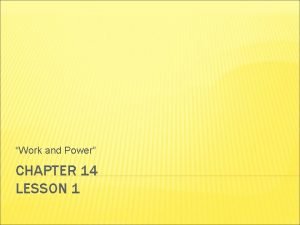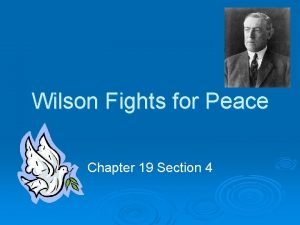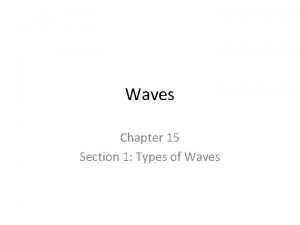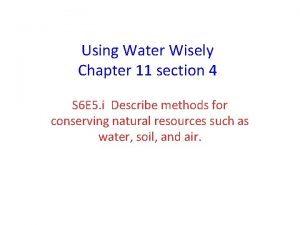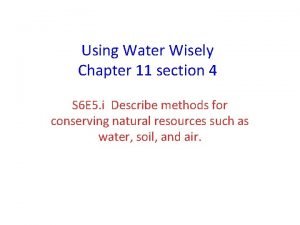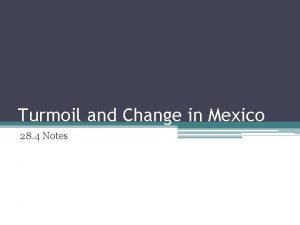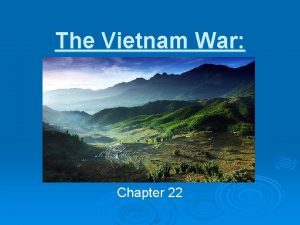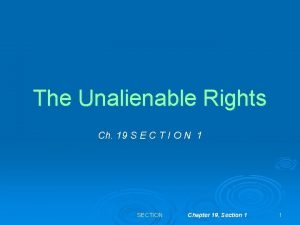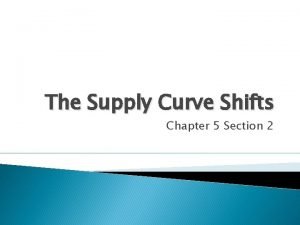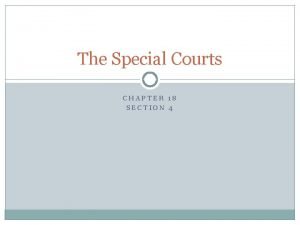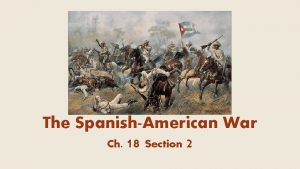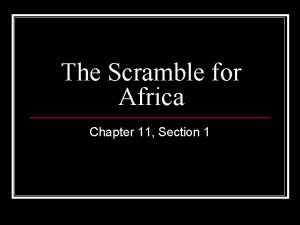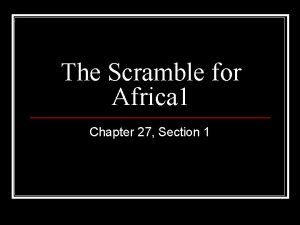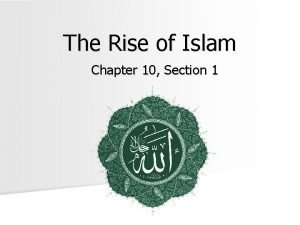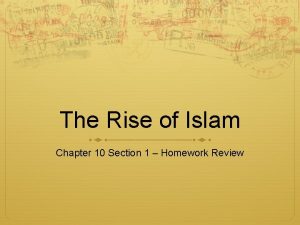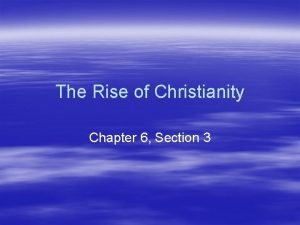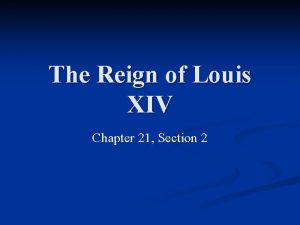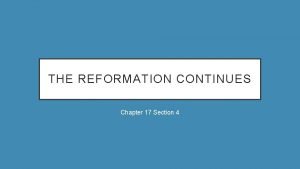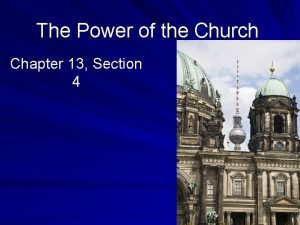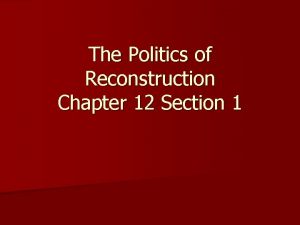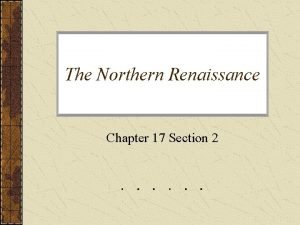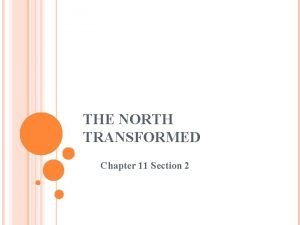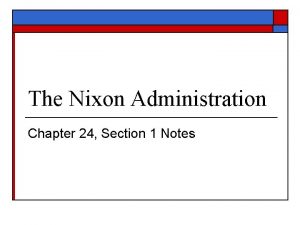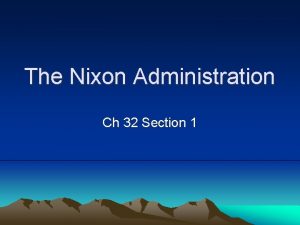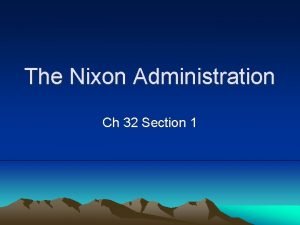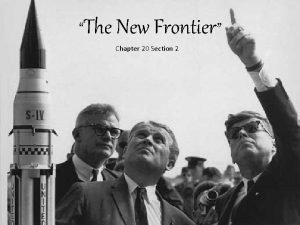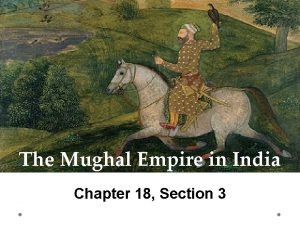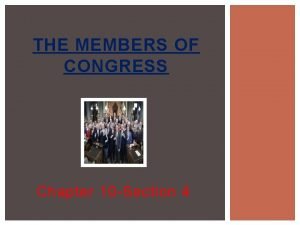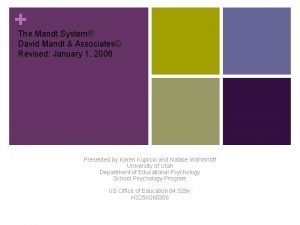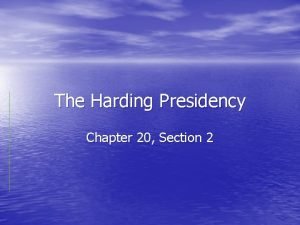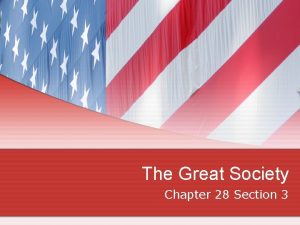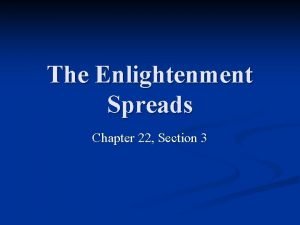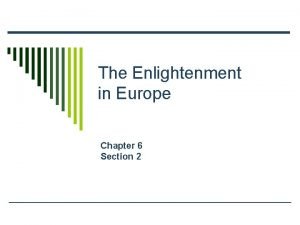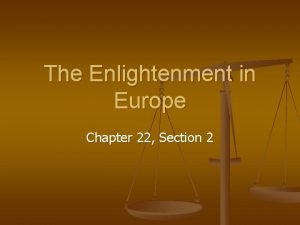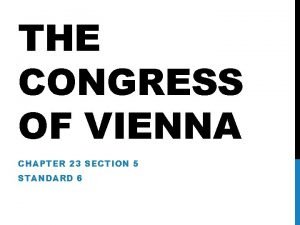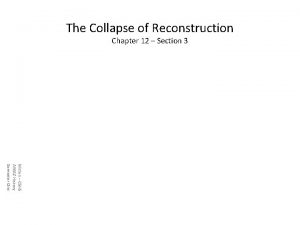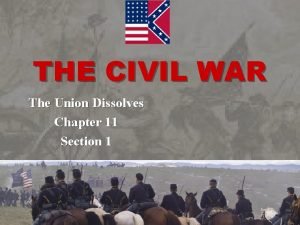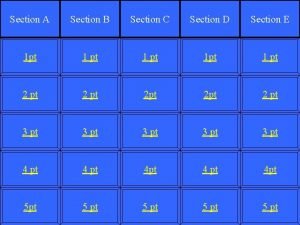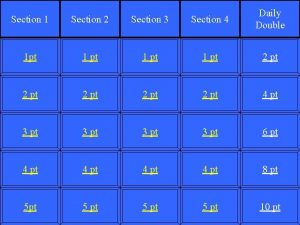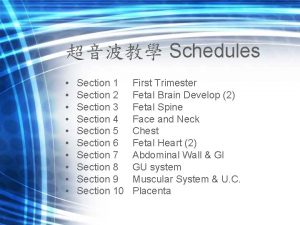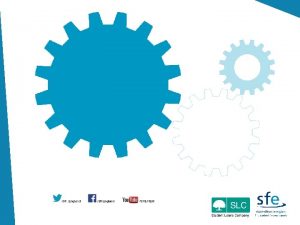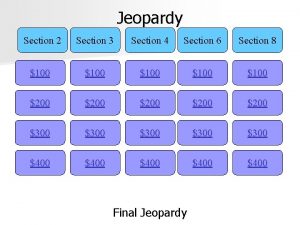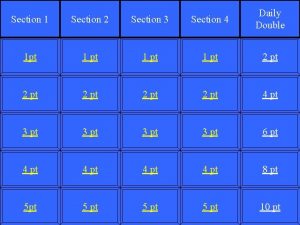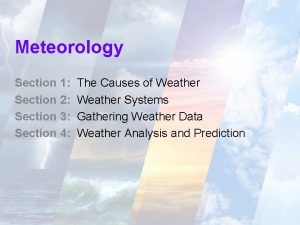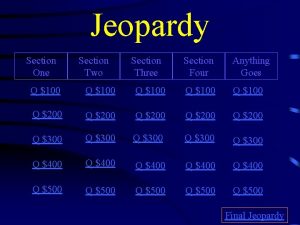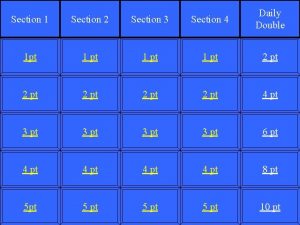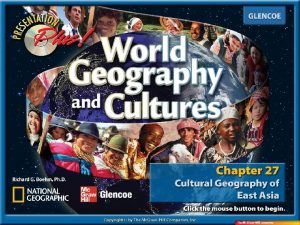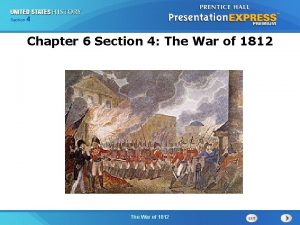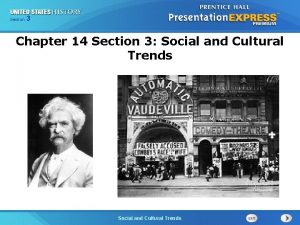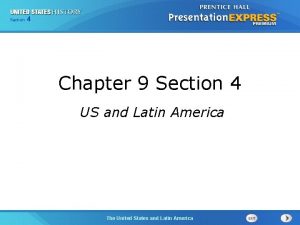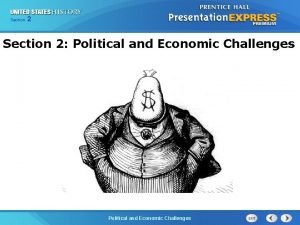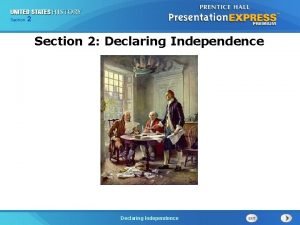Chapter 2 Section 2 Chapter Introduction This chapter







































































- Slides: 71

Chapter 2 Section 2 Chapter Introduction This chapter will introduce you to European explorations in North and South America and to the formation of colonies and empires in those regions. • Section 1: The Age of Exploration • Section 2: Spain’s Empire in the Americas • Section 3: Europeans Compete in North America • Section 4: France and the Netherlands in North America Spain’s Empire in the Americas

Chapter 2 Section 2 Visual Preview: Europe Looks Outward Spain’s Empire in the Americas

Chapter 2 Section 2 Hip Hop History: Europe Looks Outward Spain’s Empire in the Americas

Chapter 2 Section 1 Objectives • Explain what happened to the Vikings who explored Newfoundland. • Describe the voyages of Christopher Columbus. • Describe the expeditions of Spanish explorers such as Vasco Núñez de Balboa and Ferdinand Magellan. • Explain the importance of the Columbian Exchange. The Age of Exploration

Chapter 2 Section 1 Terms and People • Christopher Columbus – an Italian explorer who sailed for Spain and landed in the Caribbean islands when looking for a route to Asia • Vasco Núñez de Balboa – a Spanish colonist who was the first European to see the Pacific Ocean • Ferdinand Magellan – a Portuguese explorer who found an Atlantic-Pacific passage The Age of Exploration

Chapter 2 Section 1 Terms and People • strait – a narrow passage that connects two large bodies of water • circumnavigate – to travel all the way around the Earth The Age of Exploration

Chapter 2 Section 1 How did the search for a water route to Asia affect both Europe and the Americas? The Crusades and the Renaissance led Europeans to look beyond their borders. As European sailors searched for shorter routes to the riches of Asia, they came into contact with the people of the Americas. The Age of Exploration

Chapter 2 Section 1 Ancestors of today’s Native Americans crossed into the Americas from Asia thousands of years ago. There also many theories about people from Europe, Asia, and Africa who might have visited the Americas in the distant past. The Age of Exploration

Chapter 2 Section 1 In Newfoundland, scientists have found the remains of a settlement of Vikings, a seagoing people who originally lived in Scandinavia. According to one old Viking story, in 1001, a man named Leif Erickson and 35 other Vikings sailed from a colony in Greenland to Newfoundland, which they later named Vinland. The Age of Exploration

Chapter 2 Section 1 No one knows if Christopher Columbus heard the Viking stories, but he believed he could reach Asia by sailing west across the Atlantic Ocean. Columbus grew up in Italy and, in the 1470 s, moved to Portugal, Europe’s leading seafaring nation. There, he studied and developed his idea for a voyage to Asia. The Age of Exploration

Chapter 2 Section 1 The king of Portugal refused to finance Columbus’s voyage, so Columbus sought help from Spain’s King Ferdinand Queen Isabella. They eventually agreed, and in August 1492, Columbus set sail with his three ships, the Niña, the Pinta, and the Santa Maria. On October 12, Columbus landed on a small island claimed it for Spain. The Age of Exploration

Chapter 2 Section 1 In 1492, Columbus then sailed to present-day Cuba and Hispaniola. He continued to believe he was in Asia. Columbus sailed back to Spain, where the king and queen made him governor of the “West Indies. ” The Age of Exploration

Chapter 2 Section 1 Columbus made three other voyages to the Caribbean islands. The Age of Exploration

Chapter 2 Section 1 The Voyages of Columbus Second Voyage • In 1493, Columbus took soldiers, settlers, and priests to the “West Indies” to colonize them and to convert the people who lived there to Christianity. • He discovered other islands, including Puerto Rico • He also landed on other islands and enslaved local Native Americans to dig for gold. Third Voyage • In 1498, Columbus reached the northern coast of South America and decided it was the Asian mainland. Fourth Voyage • In 1502, Columbus tried to prove that he had indeed reached the Asian mainland on his third voyage. The Age of Exploration

Chapter 2 Section 1 In 1506, when Columbus died in Spain, he was still convinced that he had reached Asia. However, when Italian explorer Amerigo Vespucci made two trips to the new lands, he thought he was in a “new world, ” not in a part of Asia. A German mapmaker labeled the region “America” after Vespucci’s first name. The Age of Exploration

Chapter 2 Section 1 In 1510, Spanish colonist Vasco Núñez de Balboa explored the Caribbean coast of what is now Panama. He became the first European to see the Pacific Ocean. The Age of Exploration

Chapter 2 Section 1 In 1519, Portuguese explorer Ferdinand Magellan set out to find an Atlantic-Pacific passage to Asia. The Age of Exploration

Chapter 2 Section 1 For more than a year, Magellan’s small fleet sailed down the South American coast looking for a strait. Near the southern tip of present-day Argentina, Magellan found a narrow passage. About 38 days later, his ships exited what is today called the Strait of Magellan into the Pacific Ocean. The Age of Exploration

Chapter 2 Section 1 However, Asia was still far away. When Magellan’s fleet finally reached the Philippine Islands, he and others were killed in a battle with Filipinos. The survivors of the battle fled and reached Spain in 1522. Those men became the first to circumnavigate Earth. The Age of Exploration

Chapter 2 Section 1 Early Spanish voyages set the stage for the Columbian Exchange a transfer of people, products, and ideas between the hemispheres. From Western Hemisphere to Eastern (From America to Europe) Maize (corn) Potato Sweet potato Beans Peanut Squash Pumpkin Pineapple Tomato Cocoa Peppers Avocado Turkey The Age of Exploration From Eastern Hemisphere to Western (From Europe to America) Wheat Rice Banana Peach Pear Sugar cane Watermelon Lettuce Horse Cow Sheep Goat Chicken Pig Disease (smallpox, typhus)

Chapter 2 Section 1 The Columbian Exchange Positive Changes • The Europeans introduced new food plants and domestic animals to the Western hemisphere. • The Americas introduced new food plants and animals to the rest of the world, which now account for nearly one-third of the world’s food supply. Negative Changes • Europeans enslaved Native Americans as they mined for gold. • Contagious diseases brought by Europeans killed Native Americans by the thousands. The Age of Exploration

Chapter 2 Section 2 Objectives • Describe how the Spanish were able to defeat the empires of the Aztecs and Incas. • Identify Spanish explorations in areas that later became parts of the United States. • Explain how society was organized in Spain’s empire in the Americas. Spain’s Empire in the Americas

Chapter 2 Section 2 Terms and People • conquistador – Spanish soldier-adventurers • Hernando Cortés – a conquistador who conquered the Aztecs in 1520 • Moctezuma – the Aztec leader who tried to turn Cortés away from Tenochtitlán • plantation – a large farm worked by laborers who lived on the property Spain’s Empire in the Americas

Chapter 2 Section 2 Terms and People (continued) • encomienda – a land grant given by the Spanish government that included the right to demand labor or taxes from Native Americans • Bartolomé de las Casas – a Spanish priest who worked for reform of the encomienda system • mission – a religious settlement • peninsular – a Spanish colonist who was born in Spain’s Empire in the Americas

Chapter 2 Section 2 How did Spain establish an empire in the Americas? By the early 1500 s, the Spanish had a firm foothold in the Americas. From Spain’s island colonies in the Caribbean, conquistadors set out to explore and conquer new lands. They also hoped for riches and glory for themselves and Spain’s rulers. Spain’s Empire in the Americas

Chapter 2 Section 2 In 1519, conquistador Hernando Cortés sailed from Cuba to Mexico with more than 500 soldiers. Native Americans joined him because they had once been conquered by the Aztecs and wanted their land back. Later that year, Cortés marched into the Aztec capital city of Tenochtitlán, where the Aztec leader Moctezuma tried to convince him to leave by offering him gold. Spain’s Empire in the Americas

Chapter 2 Section 2 Instead, Cortés took Moctezuma hostage and claimed Mexico for Spain. In 1520, the Aztecs rebelled and drove the Spanish out. A year later, in 1521, Cortés returned with a larger force, destroyed Tenochtitlán, and built Mexico City, the capital of the Spanish colony of New Spain’s Empire in the Americas

Chapter 2 Section 2 In 1531, the conquistador Francisco Pizarro used the same methods as Cortés to defeat the Incas in modernday Peru and to search for gold. * 1532 – led about 170 soldiers into the heart of the empire and took the Inca ruler, Atahualpa prisoner. The Inca people paid a huge ransom ($30 million) to get the ruler back. However, Pizzaro instead executed Atahualpa. By 1533, the Spanish had defeated the Incas and took over their capital city of Cuzco. Spain’s Empire in the Americas

Chapter 2 Section 2 How were conquistadors able to defeat the Aztecs (Native American group)? • The Indians’ weapons were not as advanced. The Spanish had more technologically advanced weapons. They used muskets and rode horses, which the Native Americans had never seen before. • The Native Americans helped the conquistadors because they hated the Aztecs. • A recent civil war had weakened the Incas. Spain’s Empire in the Americas

Chapter 2 Section 2 In 1513, Juan Ponce de León sailed north from Puerto Rico and landed in present-day Florida. He became the first Spaniard to set foot in what is now the United States. Spain’s Empire in the Americas

Chapter 2 Section 2 Other explorers found new lands while searching for the rumored cities of gold. • The conquistador Francisco Coronado explored present-day New Mexico, Arizona, Texas, and Kansas. • Hernando de Soto explored the presentday southeastern United States and the Mississippi River. Spain’s Empire in the Americas

Chapter 2 Section 2 Álvar Núñez Cabeza de Vaca also explored North America with his crew of 400 men. 1528 The Spaniards searched for gold in Florida and were attacked by Native Americans. The 80 survivors built boats, fled by sea, and landed at present-day Galveston Island on the Texas coast. Starvation and disease reduced their number to 15 before they were enslaved by local Native Americans. Spain’s Empire in the Americas

Chapter 2 Section 2 Finally, only four—including Cabeza de Vaca, and Estevanico, an African slave—remained alive. 1534 After six years they escaped and spent two years getting back to Mexico City. 1536 In Mexico City, the men told Spanish officials about cities of gold rumored to exist. 1539 Estevanico led an expedition to the north to find cities, but he was killed by Native Americans, and the others returned to Mexico City. Spain’s Empire in the Americas

Chapter 2 Section 2 At first, Spain let the conquistadors govern the lands they had conquered, but that did not work well. Spain then created a formal system of government to rule its colonies. Government officials granted settlers huge tracts of land to start mines, ranches, and plantations. Spain’s Empire in the Americas

Chapter 2 Section 2 Society in the Spanish Colonies Peninsulares, who were at the top of the social structure and who held almost all government jobs, were Spanish colonists who had been born in Spain. Creoles colonists who were born in America of two Spanish parents These people, who could be wealthy merchants or plantation owners. Mestizos Mix of Spanish and Indian parents. Could achieve economic success as ranchers, farmers, or merchants but could not enter higher levels of society Spain’s Empire in the Americas

Chapter 2 Section 2 Society in the Spanish Colonies (continued) Mulattos These people of Spanish and African heritage were near the bottom of the social structure. Native Americans and African Americans They were held at the bottom of society. Spain’s Empire in the Americas

Chapter 2 Section 3 Objectives • Describe the religious and economic conflicts in Europe during the Reformation. • Explain why European powers continued to search for a new route to Asia. • Describe the outcome of the search by explorers John Cabot and Henry Hudson for a northwest passage around the Americas. Europeans Compete in North America

Chapter 2 Section 3 Terms and People • mercantilism – a system that held that colonies existed to make the home country wealthy and powerful • John Cabot – an Italian explorer who disappeared while on his second voyage to find a northern route to Asia • northwest passage – a hypothetical sea route from the Atlantic to the Pacific that passed through or around North America • Henry Hudson – an English explorer who attempted to find a northwest passage Europeans Compete in North America

Chapter 2 Section 3 The Reformation caused religious tensions that inflamed existing rivalries among the nations of Europe. Nations did not feel that they could depend on their allies to protect them. Europeans Compete in North America

Chapter 2 Section 3 The split between the Catholics and the Protestants increased religious and economic tensions in Europe. Catholics Europeans Compete in North America Protestants

Chapter 2 Section 3 Swiss thinker John Calvin influenced the development of Protestant churches in France, Switzerland, Scotland, and the Netherlands. Europeans Compete in North America

Chapter 2 Section 3 In England, King Henry VIII joined the side of the Protestants when he sought to divorce his wife, Catherine of Aragon. The pope refused to annul the king’s marriage, so Henry broke with the Catholic church. He set up a Protestant church and named it the Church of England. Europeans Compete in North America

Chapter 2 Section 3 Wars were common during this time period because European rulers no longer trusted one another or their trade partners. With the loss of trust in Italian and Portuguese traders, Spain supported Columbus’s voyages seeing them as a means to wealth, power, and above all, GOLD Spain demanded that 20% of all gold found in the Americas to be sent to the king. This demand was supported by a system called mercantilism, which held that colonies existed to make the home country wealthy and powerful Europeans Compete in North America

Chapter 2 Section 3 At the time, European leaders supported an economic theory called mercantilism. By establishing colonies, European nations could increase their own power and wealth. Europeans Compete in North America

Chapter 2 Section 3 King Henry VIII died in 1547, and his son ruled only briefly before he died, too. The throne passed to Mary I, who wanted to restore the Catholic Church in England. But Mary died in 1558, and Elizabeth I, a Protestant, took the throne. Europeans Compete in North America Queen Elizabeth I

Chapter 2 Section 3 At this time, Spain and England were rivals because: King Philip II of Spain wanted to make England a Catholic nation again. Europeans Compete in North America The English were raiding Spanish ships for gold from the Americas. England was helping Holland, a Spanish province, try to win its independence.

Chapter 2 Section 3 In 1588, King Philip of Spain sent 130 ships to England. These ships were also known as the Spanish armada hoping to force Queen Elizabeth from the throne. English ships met the Spanish ships off the coast of France and sank half of them. Europeans Compete in North America

Chapter 2 Section 3 The English ships defeated the armada changing the balance of power in Europe. Spain’s control of the seas weakened, so England France were able to found colonies in the Americas. Europeans Compete in North America

Chapter 2 Section 3 England funded an exploration led by John Cabot thought a more northern route to Asia would be easier than the route Christopher Columbus had tried. • During his first trip, in 1497, he explored the region around Newfoundland. • During Cabot’s second trip, in 1498, his ships disappeared without a trace. Europeans Compete in North America

Chapter 2 Section 3 Europeans soon realized the lands Cabot reached were not Asia, and they financed voyages to the new regions. Explorers from England, France, and Holland set out to find a northwest passage. Europeans Compete in North America

Chapter 2 Section 3 The Search for a Northwest Passage Giovanni da Verrazzano • In 1524, this Italian explorer sailed for France, exploring the Atlantic coastal region from North Carolina to Newfoundland. • He found the mouth of the Hudson River and New York Bay. Jacques Cartier • This French explorer made three trips to North America for France. • He discovered the St. Lawrence River and explored it as far as presentday Montreal. Europeans Compete in North America

Chapter 2 Section 3 English explorer Henry Hudson made four voyages in search of a northwest passage to the Arctic Ocean, New York, and the Hudson Bay. After two unsuccessful voyages, Hudson’s English backers gave up on him. However, in 1609, the Dutch financed his third voyage, during which he reached New York and explored the river that today bears his name. Europeans Compete in North America

Chapter 2 Section 3 In 1610, the English sponsored Hudson’s fourth voyage, during which his ship got stuck in the icy waters of Hudson Bay. In the spring of 1611, his irate crew mutinied and set him, his son, and several crew members adrift in a small boat. Hudson was never heard from again. Europeans Compete in North America

Chapter 2 Section 3 After Hudson, European countries shifted their focus from finding a northwest passage to exploring the land itself. Europeans Compete in North America Europeans began to consider exploiting the resources of the land for profit.

Chapter 2 Section 4 Objectives • Describe how New France spread into the interior of North America. • Explain how the Dutch established a thriving colony along the Hudson River. • Explain the influence of these settlements on the Native Americans of the region. France and Netherlands in North America

Chapter 2 Section 4 Terms and People • Samuel de Champlain – a French explorer who established the settlement of Quebec • coureurs de bois – independent traders who lived among the Indians (French term for “runners of the woods”) • Jacques Marquette – a French missionary who explored the Mississippi River • alliance – an agreement between parties that benefits them both France and Netherlands in North America

Chapter 2 Section 4 What impact did the establishment of French and Dutch colonies in North America have on Native Americans? In the early 1600 s, England, France, and the Netherlands sent explorers to North America and staked claims to land there. Their activities had grave consequences for the Native Americans who lived in North America. France and Netherlands in North America

Chapter 2 Section 4 In 1603, Samuel de Champlain made the first of 11 voyages to explore and map the lands along the St. Lawrence River. In 1604, he established the first settlement—a trading post—in the colony of New France in present-day Nova Scotia. In 1608, Champlain established a trading post and settlement of Quebec along the St. Lawrence River. France and Netherlands in North America

Chapter 2 Section 4 Trading posts such as Quebec City and Montreal became busy centers of commerce. Coureurs de bois acquired pelts from Native Americans, and many of them married Native American women and started families. France and Netherlands in North America

Chapter 2 Section 4 Champlain gave the French an influence in the region that lasted 150 years, and other explorers followed his lead. By 1670, French missionary Jacques Marquette had founded two missions along the Great Lakes, in present-day Michigan. France and Netherlands in North America

Chapter 2 Section 4 In 1673, Father Marquette and French Canadian trader Louis Joliet explored Lake Michigan and the Mississippi River. They had thought the Mississippi River might be the long-sought northwest passage, but they soon changed their minds. France and Netherlands in North America However, the two did discover a water route into the heart of North America.

Chapter 2 Section 4 The exploration of the Mississippi was completed in 1682 by René Robert Cavelier (La Salle). He reached the river’s mouth at the Gulf of Mexico, claimed the entire Mississippi Valley for France, and named the region Louisiana. France and Netherlands in North America

Chapter 2 Section 4 The colony of New France developed quite differently than did New Spain. The Spanish, who wanted gold and silver, forced Native Americans into harsh labor. The French, who wanted fish and furs. They traded with Native Americans for the animal skins which were prized in in Europe. France and Netherlands in North America

Chapter 2 Section 4 Dutch land claims in North America were based on Henry Hudson’s explorations of the Hudson River. In 1610, Dutch traders began trading with Native Americans in the Hudson River valley. The trade was so profitable that the Dutch West India Company established a colony in what the Dutch called “New Netherland. ” France and Netherlands in North America

Chapter New Netherland 2 Section 4 New Albany • In 1624, about 300 settlers arrived from the Netherlands. • Most of them settled at Fort Orange (later renamed New Albany). New Amsterdam • In 1626, another group settled at the mouth of the Hudson River on land purchased from Native Americans. • The colonists named their new home New Amsterdam. • By 1653, it had a population of 800. New Netherland was renamed New York when it was seized by the English in 1664. France and Netherlands in North America

Chapter 2 Section 4 Native Americans traded fur pelts to the French and Dutch in exchange for goods such as cloth, iron pots and tools, and guns. Ultimately, however, the fur trade had grave effects on Native Americans. France and Netherlands in North America

Chapter 2 Section 4 Native Americans were weakened by diseases they caught from the Europeans. Sickness spread quickly because Native Americans had no immunity to European diseases. France and Netherlands in North America

Chapter 2 Section 4 Also, the French and Dutch made alliances with different tribes, who were enemies. The French were allied with the Hurons, and the Dutch were allied with the Iroquois. The Iroquois attacked the Hurons with guns they got from the Dutch. France and Netherlands in North America

Chapter 2 Section 4 In addition, the fur trade caused over-trapping of animals and weakened the food chain on which Native Americans depended. As the furbearing animals disappeared, the Native Americans became less valuable trading partners to the colonists. Colonists began to covet Native American land instead. France and Netherlands in North America

Chapter 2 Section 4 In the late 1600 s, French colonists began to farm in large numbers because: Indian wars disrupted the fur trade. The king sent 3, 000 French settlers to New France. The market for furs in Europe was in decline. The new settlers included young single women. New France had 5, 000 colonists by 1672. France and Netherlands in North America

Chapter 2 Section 4 Section Review Quick. Take Quiz Know It, Show It Quiz France and Netherlands in North America
 Concept mapping chapter 10 meiosis 1 and meiosis 2
Concept mapping chapter 10 meiosis 1 and meiosis 2 Section 1 introduction to protists answer key
Section 1 introduction to protists answer key Chapter 1 section 1 introduction to biology
Chapter 1 section 1 introduction to biology Hidden lines are not generally omitted in a sectional view
Hidden lines are not generally omitted in a sectional view When should a revolved section be used
When should a revolved section be used Section lining
Section lining Section 1 work and machines section 2 describing energy
Section 1 work and machines section 2 describing energy Geometry circle vocabulary
Geometry circle vocabulary 26-1 introduction to the animal kingdom
26-1 introduction to the animal kingdom Section 22-1 introduction to plants answer key
Section 22-1 introduction to plants answer key Section 32-1 introduction to the mammals
Section 32-1 introduction to the mammals Section 28-2 groups of arthropods answer key
Section 28-2 groups of arthropods answer key Section 39-1 review introduction to vertebrates
Section 39-1 review introduction to vertebrates Section 28-1 introduction to the arthropods answer key
Section 28-1 introduction to the arthropods answer key Section 18-1 introduction to ecology worksheet answers
Section 18-1 introduction to ecology worksheet answers Section 28-1 introduction to the arthropods
Section 28-1 introduction to the arthropods Calculus 3
Calculus 3 Section 1 introduction to geometry answers
Section 1 introduction to geometry answers Introduction to chemistry section 3 scientific methods
Introduction to chemistry section 3 scientific methods Introduction to animals section 1 animal characteristics
Introduction to animals section 1 animal characteristics Body paragraph structure
Body paragraph structure Chapter 17 section 3 luther leads the reformation
Chapter 17 section 3 luther leads the reformation Chapter 30 section 2 world history
Chapter 30 section 2 world history What was the counter-reformation?
What was the counter-reformation? Chapter 10 section 2 central america and the caribbean
Chapter 10 section 2 central america and the caribbean Chapter 14 section 1 work and power
Chapter 14 section 1 work and power Wilson fights for peace
Wilson fights for peace Chapter 15 section 1 types of waves answer key
Chapter 15 section 1 types of waves answer key Chapter 24 section 2 watergate answers
Chapter 24 section 2 watergate answers Chapter 11 section 4 using water wisely answer key
Chapter 11 section 4 using water wisely answer key Chapter 11 section 4 using water wisely answer key
Chapter 11 section 4 using water wisely answer key Shifters of supply
Shifters of supply Chapter 5 section 4: the minor parties answer key
Chapter 5 section 4: the minor parties answer key Chapter 28 section 4 turmoil and change in mexico
Chapter 28 section 4 turmoil and change in mexico Chapter 14 section 2 totalitarianism
Chapter 14 section 2 totalitarianism Whats vietnamization
Whats vietnamization Chapter 19 section 1 the unalienable rights
Chapter 19 section 1 the unalienable rights Chapter 5 section 2 the supply curve shifts answers
Chapter 5 section 2 the supply curve shifts answers Chapter 18 section 4 the special courts worksheet answers
Chapter 18 section 4 the special courts worksheet answers Chapter 18 section 2 the spanish american war
Chapter 18 section 2 the spanish american war Chapter 11 section 1 the scramble for africa
Chapter 11 section 1 the scramble for africa Chapter 27 section 1 the scramble for africa
Chapter 27 section 1 the scramble for africa Chapter 6 section 1 the scientific revolution
Chapter 6 section 1 the scientific revolution Islam beliefs and practices
Islam beliefs and practices The rise of islam worksheet answers chapter 10 section 1
The rise of islam worksheet answers chapter 10 section 1 Chapter 6 section 3 the rise of christianity answer key
Chapter 6 section 3 the rise of christianity answer key Chapter 21 section 2 the reign of louis xiv
Chapter 21 section 2 the reign of louis xiv The reformation continues chapter 17 section 4
The reformation continues chapter 17 section 4 Chapter 13 section 4 the power of the church
Chapter 13 section 4 the power of the church The politics of reconstruction chapter 12 section 1
The politics of reconstruction chapter 12 section 1 The northern renaissance chapter 17 section 2
The northern renaissance chapter 17 section 2 Chapter 11 section 2 the north transformed
Chapter 11 section 2 the north transformed Chapter 24 section 1: the nixon administration answers
Chapter 24 section 1: the nixon administration answers Chapter 32 section 1 the nixon administration
Chapter 32 section 1 the nixon administration Chapter 32 section 1 the nixon administration
Chapter 32 section 1 the nixon administration Chapter 20 section 2 the new frontier
Chapter 20 section 2 the new frontier Chapter 15 section 3 the new deal affects many groups
Chapter 15 section 3 the new deal affects many groups Chapter 18 section 3 the mughal empire in india
Chapter 18 section 3 the mughal empire in india Chapter 10 section 4 the members of congress
Chapter 10 section 4 the members of congress The mandt system chapter 1 2 3- relational section answers
The mandt system chapter 1 2 3- relational section answers Chapter 24 section 1 landforms and resources
Chapter 24 section 1 landforms and resources Chapter 12 section 2 the harding presidency
Chapter 12 section 2 the harding presidency Chapter 28 section 3 the great society
Chapter 28 section 3 the great society Chapter 28 section 3 the great society
Chapter 28 section 3 the great society The french revolution begins chapter 7 section 1
The french revolution begins chapter 7 section 1 The enlightenment spreads answer key
The enlightenment spreads answer key The enlightenment spreads chapter 22 section 3
The enlightenment spreads chapter 22 section 3 The enlightenment in europe chapter 6 section 2
The enlightenment in europe chapter 6 section 2 Chapter 22 the enlightenment in europe
Chapter 22 the enlightenment in europe Chapter 23 section 5 the congress of vienna
Chapter 23 section 5 the congress of vienna The collapse of reconstruction chapter 12 section 3
The collapse of reconstruction chapter 12 section 3 Southern states civil war
Southern states civil war







